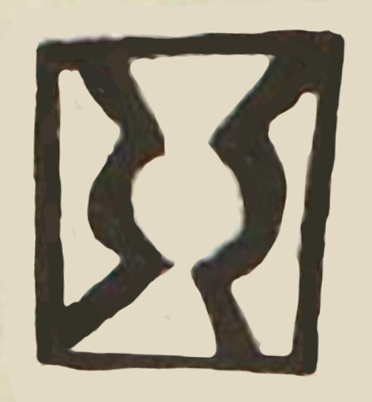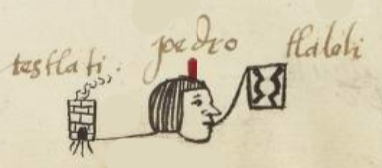Tlalolin (MH811r)
This black-line drawing of the compound glyph for the personal name Tlalolin (“Earthquake”) is attested here as a man’s name. The glyph shows a rectangle that represents agricultural land (tlalli) or the surface of the Earth (also tlalli). In the middle of the rectangle is the sign for olin (movement), which is a calendrical day name in the 260-day religious divinatory calendar, the tonalpohualli.
Stephanie Wood
The concept of movement (not just in the form of earthquakes) permeates Nahua culture, as James Maffie (Aztec Philosophy, 2014) has described extensively. Olin is a day sign in the 260-day divinatory calendar (the tonalpohualli). This calendar played an important role in Nahuas' religious views of the cosmos. The colors and precise shape of the olin glyph do vary within manuscripts and across them.
Stephanie Wood
1560
Jeff Haskett-Wood
temblores, movimiento, calendarios, días, days, calendars, fechas, dates

tlalolin, earthquake, https://nahuatl.wired-humanities.org/content/tlalolin
tlalolini, for the earth to quake, https://nahuatl.wired-humanities.org/content/tlalolini
tlal(li), land, https://nahuatl.wired-humanities.org/content/tlalli
ol(in), movement, https://nahuatl.wired-humanities.org/content/olin
Tembló la Tierra
Stephanie Wood
Matrícula de Huexotzinco, folio 811r, World Digital Library, https://www.loc.gov/resource/gdcwdl.wdl_15282/?sp=696&st=image.
This manuscript is hosted by the Library of Congress and the World Digital Library; used here with the Creative Commons, “Attribution-NonCommercial-ShareAlike 3.0 License” (CC-BY-NC-SAq 3.0).








